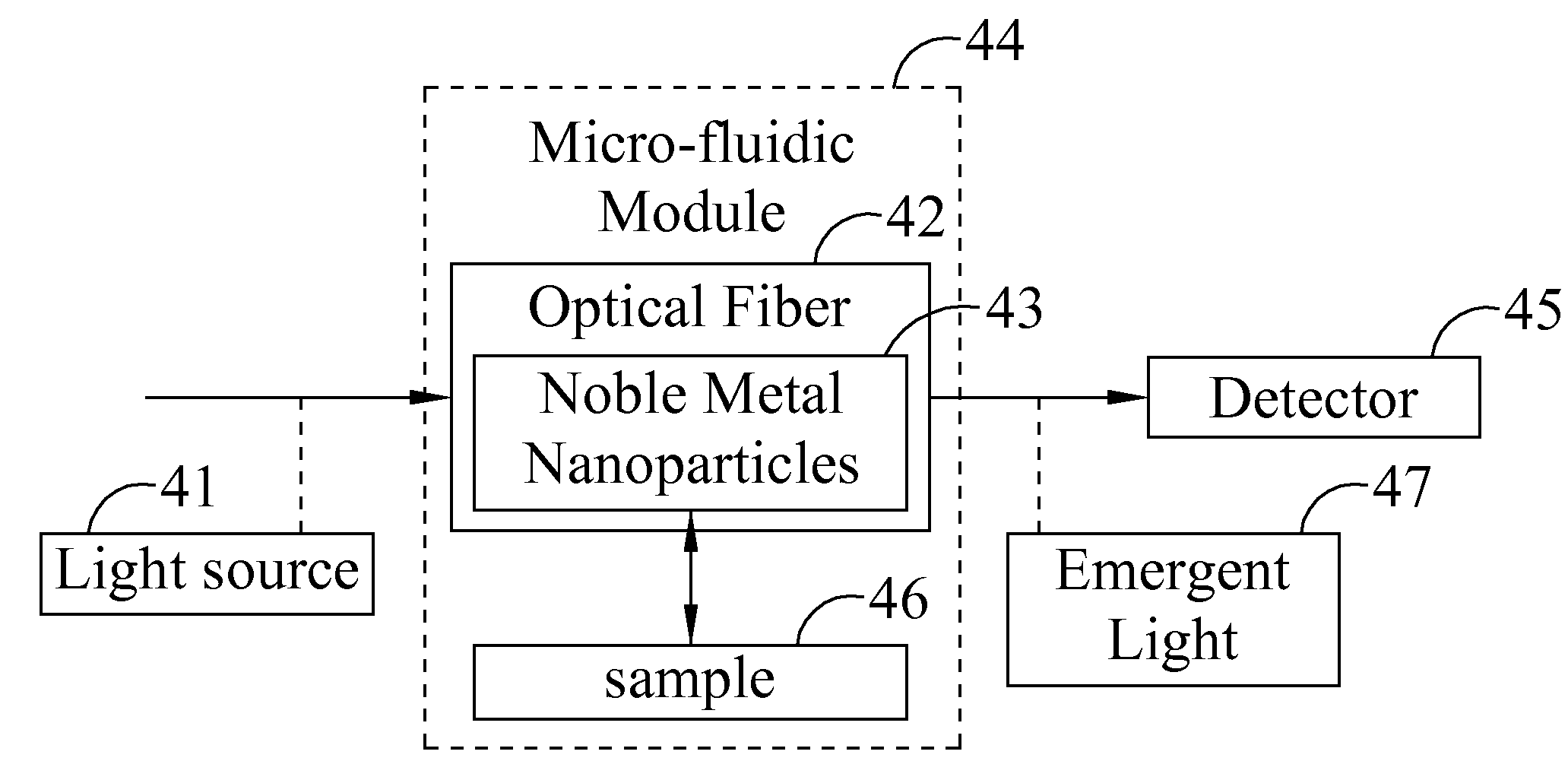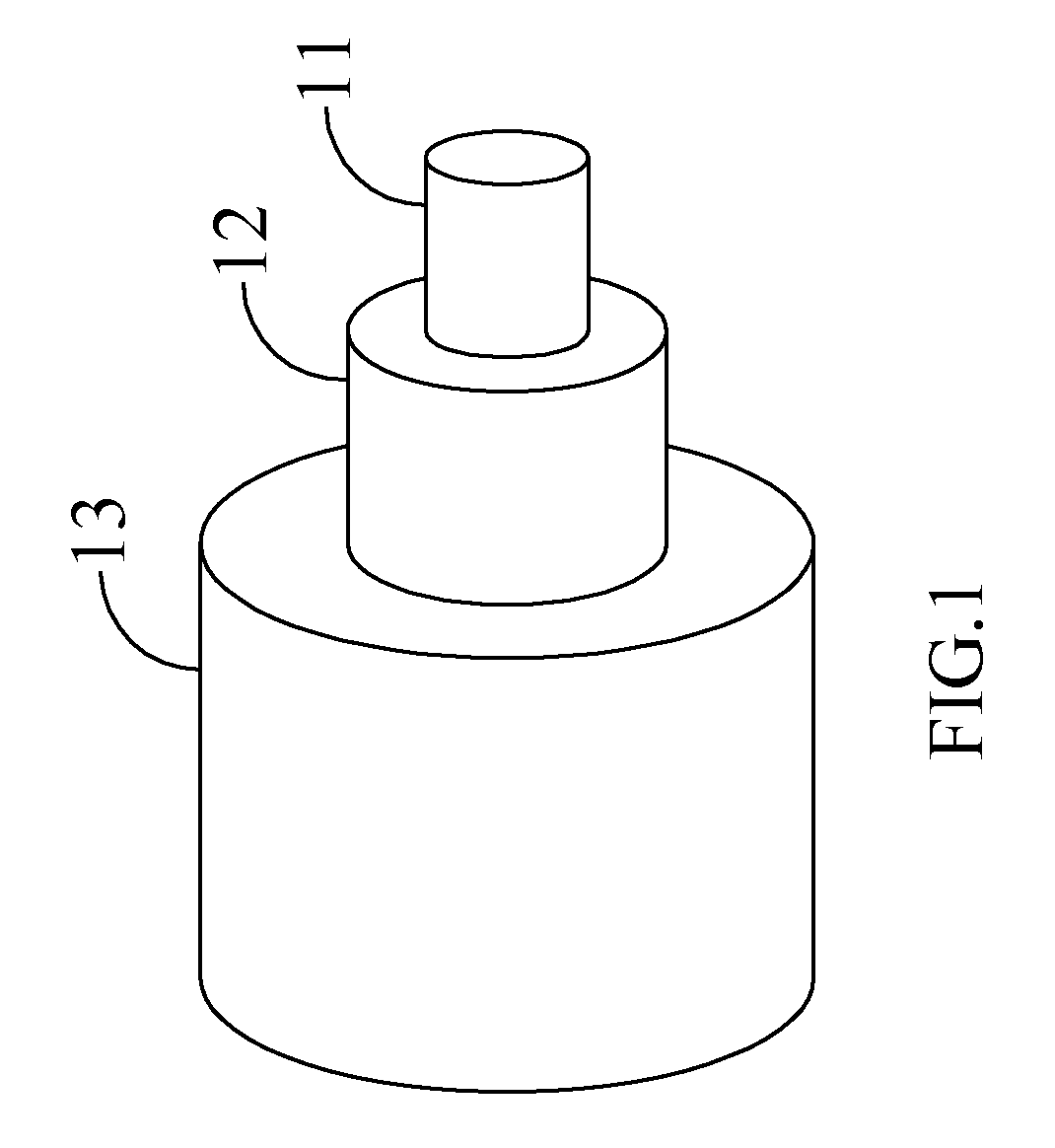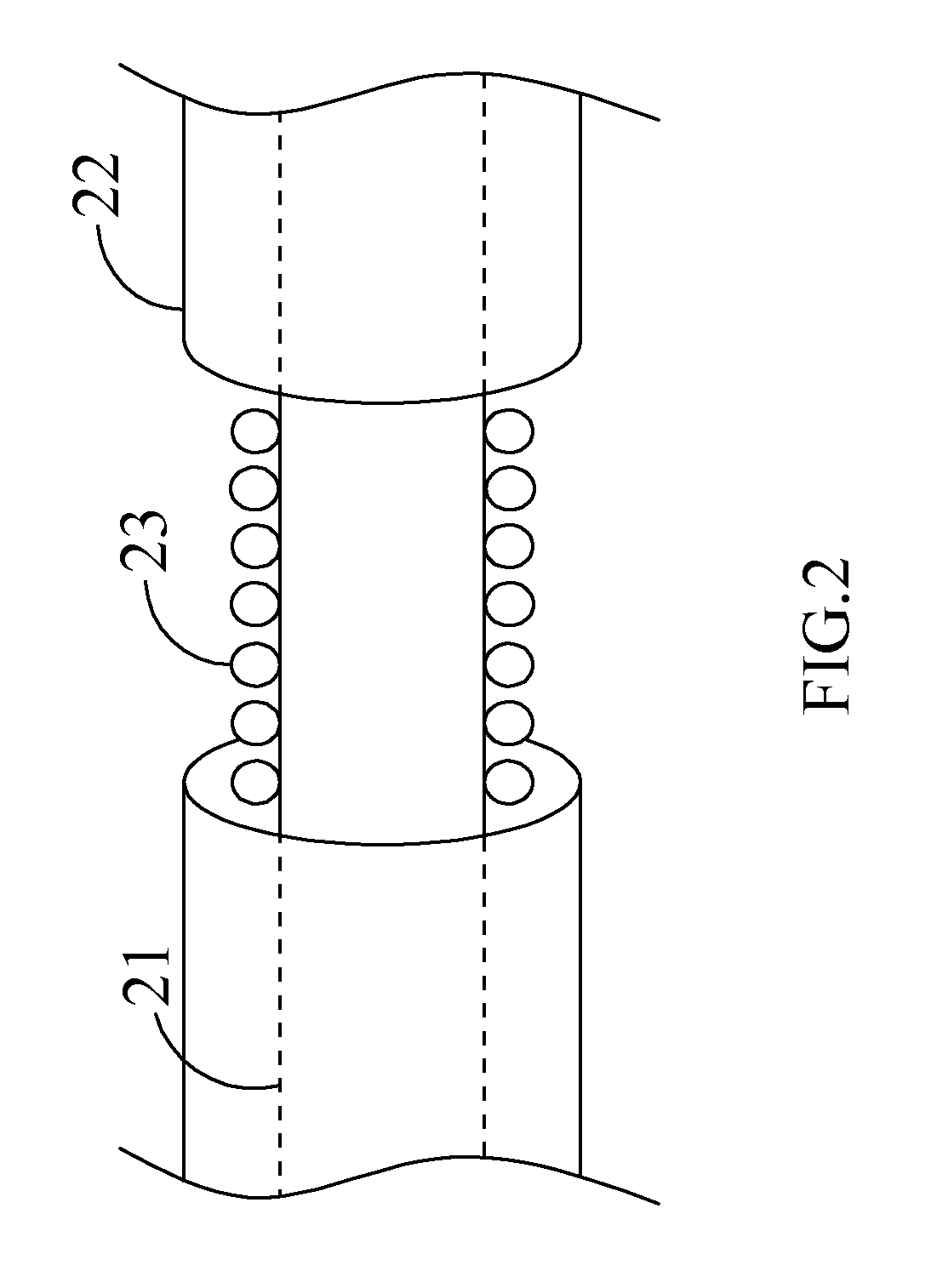Localized surface plasmon resonance sensing system, appartatus, method thereof
a plasmon resonance and sensing system technology, applied in the field of lspr sensing system, apparatus, can solve the problems of difficult miniaturization, difficult to meet the needs of small-scale, high cost, etc., and achieve the effects of promoting sensitivity, and reducing the size of the lspr sensing system
- Summary
- Abstract
- Description
- Claims
- Application Information
AI Technical Summary
Benefits of technology
Problems solved by technology
Method used
Image
Examples
Embodiment Construction
[0027]Referring to FIG. 1 for a schematic view showing construction of an optical fiber cable, the cable is essentially comprised of three layers, respectively the innermost a core 11, a cladding 12 in the middle, an outermost buffer 13 with materials and functions different from one another. As illustrated in FIG. 2 for a schematic view showing that a plurality of noble metal nano-particles 23 are disposed on the unclad portion of an optical fiber. The plurality of noble metal nano-particles 23 are gold nano-particles or silver nano-particles. The optical fiber comprises a stripped area formed by partially removing the cladding 22 of the optical fiber, then the plurality of noble metal nano-particles 23 are disposed on the core 21 of the optical fiber. The noble metal nano-particles 23 are substantially separated from each adjacent noble metal nano-particles such that the conductivity of the noble metal nano-particle submonolayer is smaller than that of the metal film.
[0028]Please ...
PUM
| Property | Measurement | Unit |
|---|---|---|
| conductivity | aaaaa | aaaaa |
| conductivity | aaaaa | aaaaa |
| diameter | aaaaa | aaaaa |
Abstract
Description
Claims
Application Information
 Login to View More
Login to View More - R&D
- Intellectual Property
- Life Sciences
- Materials
- Tech Scout
- Unparalleled Data Quality
- Higher Quality Content
- 60% Fewer Hallucinations
Browse by: Latest US Patents, China's latest patents, Technical Efficacy Thesaurus, Application Domain, Technology Topic, Popular Technical Reports.
© 2025 PatSnap. All rights reserved.Legal|Privacy policy|Modern Slavery Act Transparency Statement|Sitemap|About US| Contact US: help@patsnap.com



